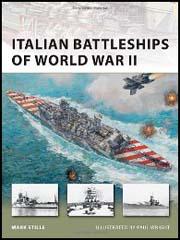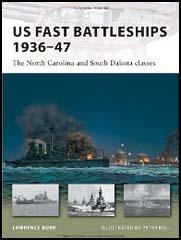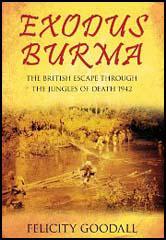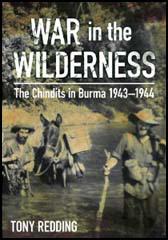Spartacus Review
Volume 56: 28th December, 2011
Military History

Title: Italian Battleships of World War II
Author: Mark Stille
Editor:
Publisher: Osprey
Price: £9.99
Bookshop: Amazon
Spartacus Website: Armed Forces
Category:
Italy’s navy, the Regia Marina was the fourth-largest naval force in the world at the outbreak of World War II, and yet is often overlooked and largely discounted as ineffective. In general the fleet was made up of obsolete vessels, lacked radar functionality, and had a reputation for indiscipline and poorly trained crews. The complex and bureaucratic command system imposed on the fleet further hampered its effectiveness. In this book, Mark Stille details why the Italian battleships were able to maintain a solid reputation, examining their impressive designs and the courage and determination of the fleet at Calabria, Sirte, Cape Spartiveto and Cape Matapan, all illustrated with stunning photographs from the Italian Navy’s own archives.

Title: US Fast Battleships 1936-47
Author: Lawrence Burr
Editor:
Publisher: Osprey
Price: £9.99
Bookshop: Amazon
Spartacus Website: US Navy
Category:
This volume details the design, construction, and operation of the first six of the ten US fast battleships, two of the North Carolina class and four of the South Dakota class. These six battleships were all authorized in 1936 and were the first vessels built in the US since 1923. Consequently, these ships benefitted from enormous technological leaps, with improvements in ship design, power, armor, armament and the single most important improvement the use of radar guided fire control helping to change the course of the war in the Pacific. Packed with first-hand accounts, battle reports, and specially created artwork this book tells the story of these war-winning vessels.

Title: Exodus Burma
Author: Felicity Goodall
Editor:
Publisher: History Press
Price: £11.95
Bookshop: Amazon
Spartacus Website: Burma and the Second World War
Category:
Until a few weeks before the fall of Rangoon, the British had not dreamt the Japanese would invade Burma. So in early 1942, British soldiers trained for desert warfare fought a Japanese Army trained and equipped for the jungle. Those who survived this fierce fighting faced malaria, air attack, and lack of food and water, on the long walk out through the Valley of Death. Ragged groups of soldiers and civilians were forced to trek out of Burma through some of the most inhospitable terrain in the world. They hacked their way through jungle, forded rivers, and climbed steep mountainsides to escape. Many did not survive the journey. Among these incredible stories was that of Bill Williams, who led refugees out on a herd of elephants. Other civilians who had enjoyed an idyllic colonial lifestyle were ill-equipped for the journey. Setting off with the family silver and their pets, they soon had to abandon all but the essentials in order to survive. Thousands died, but many more crossed the border into India and safety.

Title: War in the Wilderness
Author: Tony Redding
Editor:
Publisher: History Press
Price: £25.00
Bookshop: Amazon
Spartacus Website: Orde Wingate
Category:
War in the Wilderness is the most comprehensive account ever published of the human aspects of the Chindit war in Burma. The word Chindit will always have a special resonance in military circles. Every Chindit endured what is widely regarded as the toughest sustained Allied combat experience of the Second World War. The Chindit expeditions behind Japanese lines in occupied Burma 1943 1944 transformed the morale of British forces after the crushing defeats of 1942. The Chindits provided the springboard for the Allies later offensives. The two expeditions extended the boundaries of human endurance. The Chindits suffered slow starvation and exposure to dysentery, malaria, typhus and a catalogue of other diseases. They endured the intense mental strain of living and fighting under the jungle canopy, with the ever-present threat of ambush or simply bumping the enemy. Every Chindit carried his kit and weapons (equivalent to two heavy suitcases) in the tropical heat and humidity. A disabling wound or sickness frequently meant a lonely death. Those who could no longer march were often left behind with virtually no hope of survival. Some severely wounded were shot or given a lethal dose of morphia to ensure they would not be captured alive by the Japanese. Fifty veterans of the Chindit expeditions kindly gave interviews for this book. Many remarked on the self-reliance that sprang from living and fighting as a Chindit. Whatever happened to them after their experiences in Burma, they knew that nothing else would ever be as bad. There are first-hand accounts of the bitter and costly battles and the final, wasteful weeks, when men were forced to continue fighting long after their health and strength had collapsed. War in the Wilderness continues the story as the survivors returned to civilian life. They remained Chindits for the rest of their days, members of a brotherhood forged in extreme adversity.
